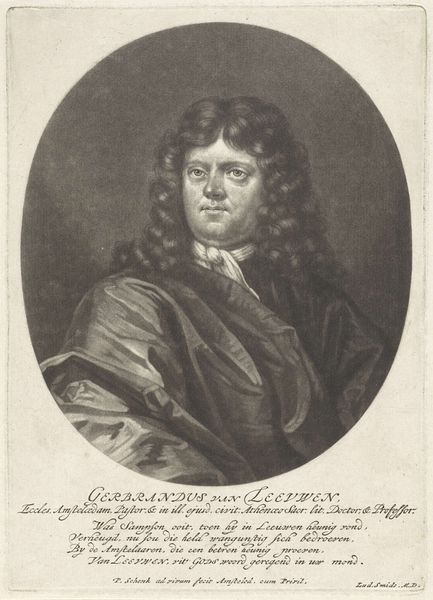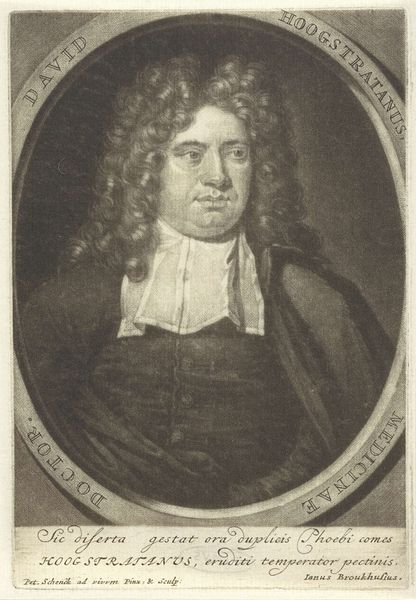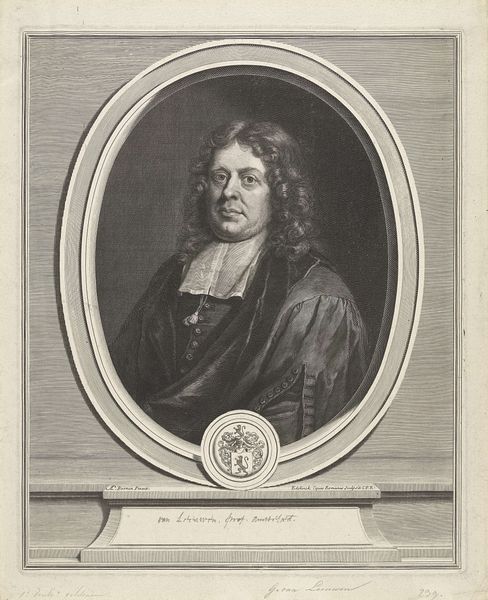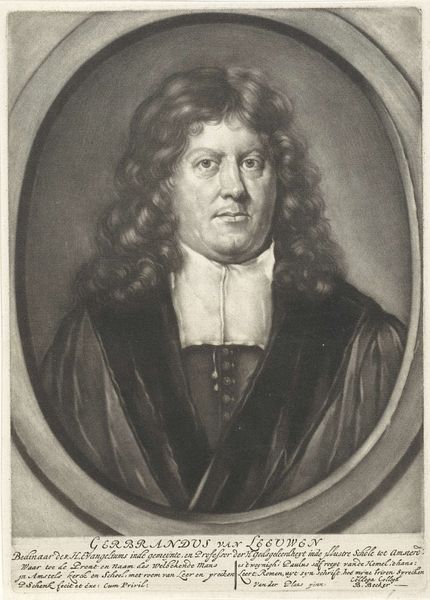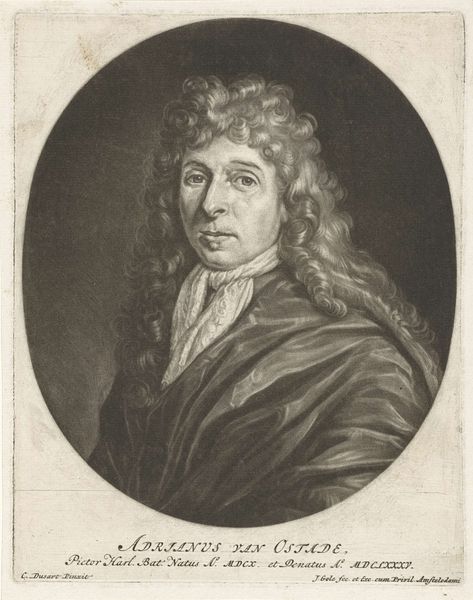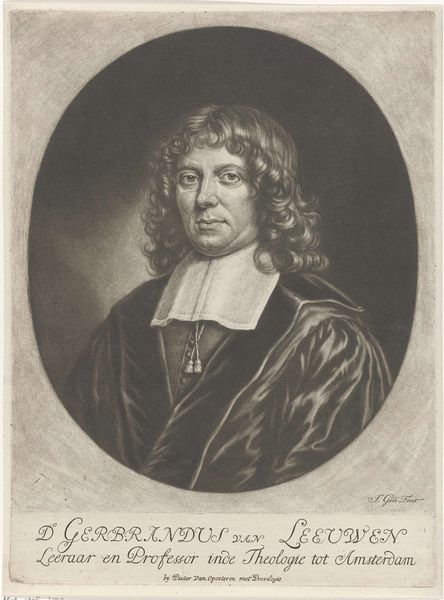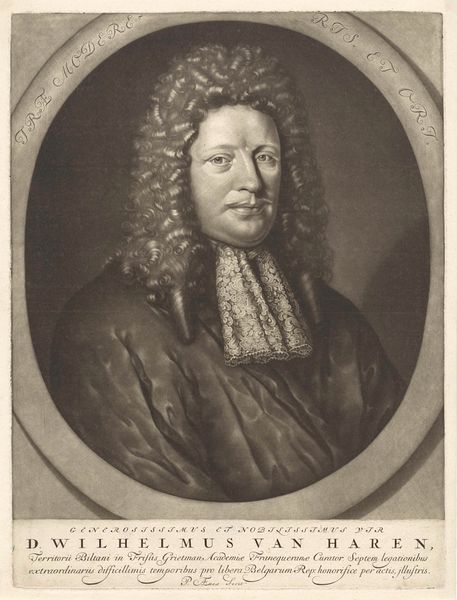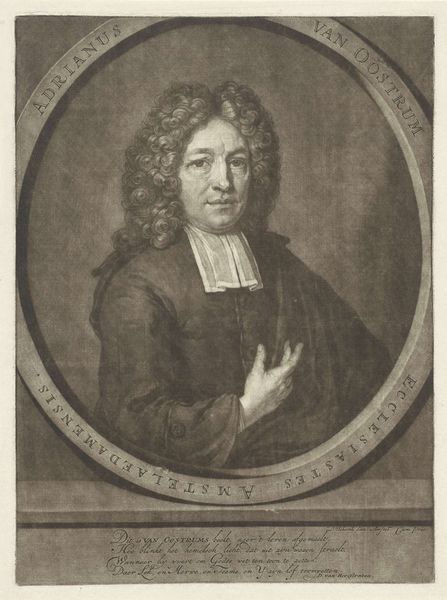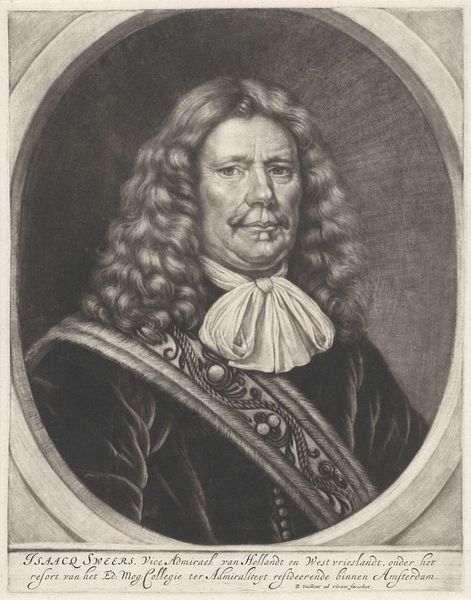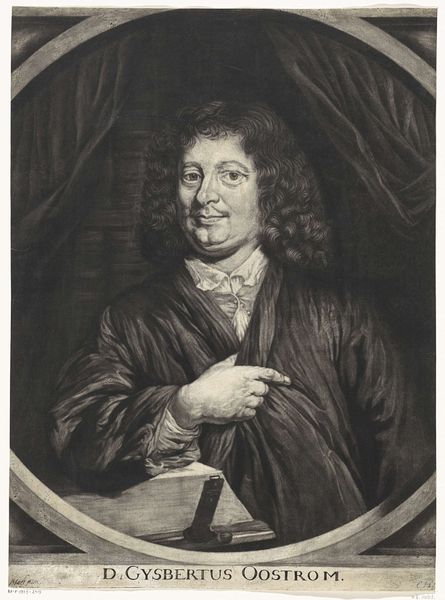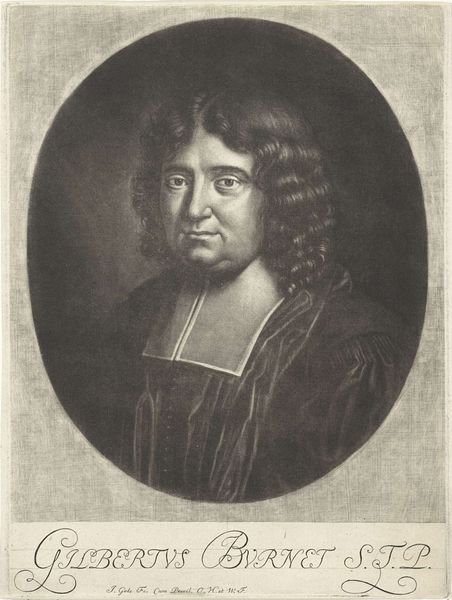
Portret van de predikant en hoogleraar Gerbrand van Leeuwen 1670 - 1713
0:00
0:00
pieterschenk
Rijksmuseum
print, engraving
#
portrait
#
baroque
#
dutch-golden-age
# print
#
single portrait
#
history-painting
#
engraving
Dimensions: height 283 mm, width 208 mm
Copyright: Rijks Museum: Open Domain
Editor: Here we have a print, an engraving, titled "Portrait of the Preacher and Professor Gerbrand van Leeuwen" made sometime between 1670 and 1713 by Pieter Schenk. The overall feel is quite formal, almost imposing, fitting perhaps for someone of such stature. I am intrigued by the text in another language. How do you interpret this work, placing it within its historical context? Curator: It is striking, isn’t it? Consider the public role of such a portrait during the Dutch Golden Age. Think about the status Schenk's engraving confers upon van Leeuwen by placing him within a lineage of respected theologians. How does the use of text – particularly non-Latin script, Hebrew in this instance – contribute to that public image? Does it perhaps signal his erudition, and also appeal to the cultural fascination of the era? Editor: It does make him appear well-read, scholarly. So, you are suggesting that displaying knowledge of different languages was itself a political and social statement? Curator: Precisely. Printmaking in this era was often commissioned. Therefore, such works had an undeniable political aim in image-making. The very act of creating and distributing the engraving elevates his position in society. It reinforces ideas around faith, authority, and learning that the upper-classes valued. Also, what purpose might prints like this serve, displayed in homes or institutions? Editor: To spread his teachings further, enhancing his legacy. It is fascinating to consider the powerful role images played back then. Curator: Indeed, reflecting on it further helps us think critically about power and representation even today. It really illuminates how intertwined social status and image management were.
Comments
No comments
Be the first to comment and join the conversation on the ultimate creative platform.

